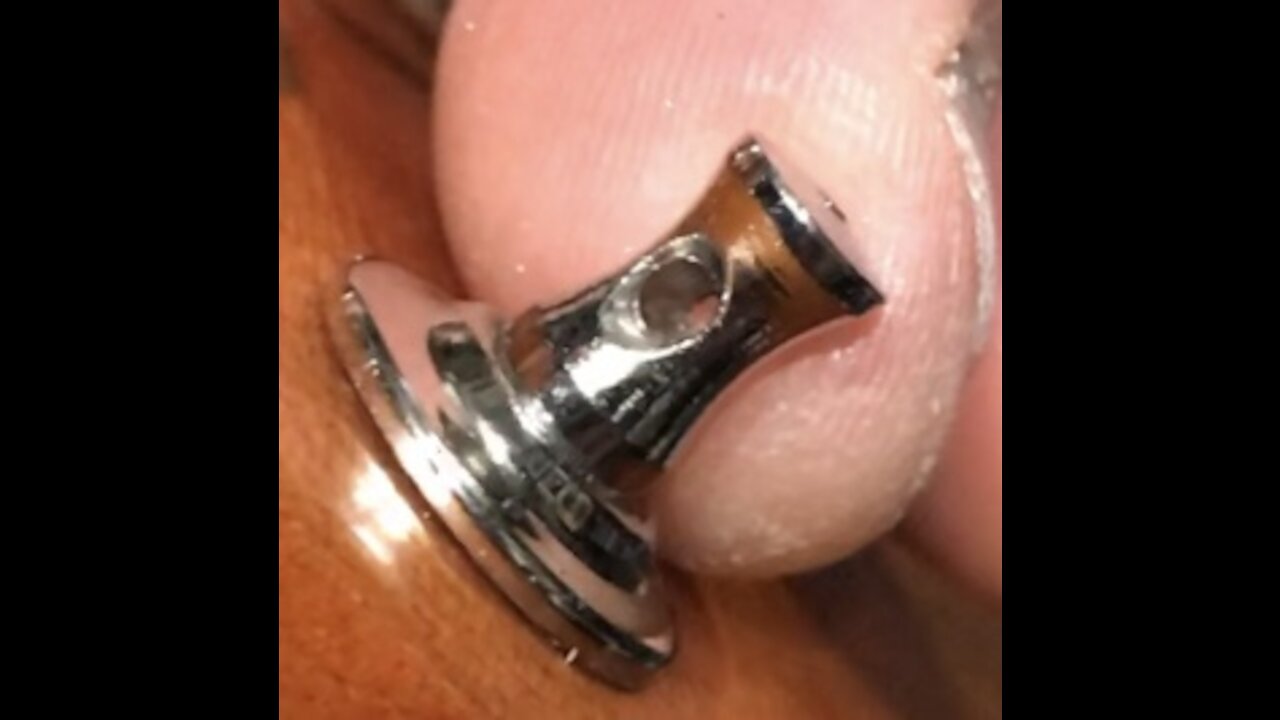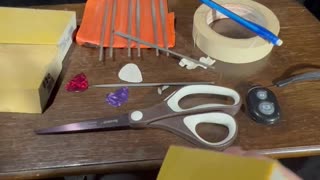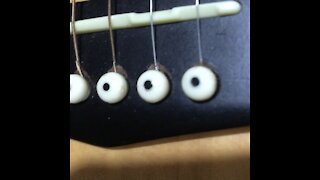Premium Only Content

Guitar Maintenance and Repair - Inspecting tuning machine holes for burrs
In this video, we inspect the tuning machines during a routine string change job.
We are looking closely at the hole where the string goes thru the peg, looking for burrs or rough edges that the string might touch.
I use a 1/8” shank diamond tip bits, and just use them like a tiny file.
The metal on these tuning machines is kind of soft, so beware not to use power tools for this job, as you may grind away more material than you intended.
By doing thus job by hand, you can keep your eye on the tool, and make single, gentle, targeted strokes, so that you remove exactly enough material, and not any more.
Nice things about this job are
1) you could prevent an unplanned string break, which usually occurs at the least convenient time, like, when you are trying to play your guitar...
2) as far as i know, you only have to do this job once, unless the strings actually create new burrs. Just have to inspect pegs during each string change to see.
Also, when you have the strings off is a good time to exercise the tuning pegs and see how they turn.
Lube if necessary.
Snug up loose screws at end of tuner knob to make tuner turn harder. Turn peg as you adjust the screw. Micro-adjust all tuner screws until all tuning pegs turn, and feel, the same
I started looking at the tuner peg holes on my guitars after i broke THREE!!! brand new strings in one day!
I finally took a look at the peg, because the string always broke on the same end.
Sure enough, there was a sharp burr in the tuning peg hole, that the string would go over under tension as the (brand new!!) string was being tuned.
I would say most of the tuning pegs i have inspected, have had these burrs.
Also, inspect the bridge end of the string, for any burrs or sharp edges.
The guitar in this video has string notches carved out in the bridge pin holes, but i will probably take a small file and put a nice gentle radius on those string notches.
For the above job, plan on 6 hours of your own labor. 1 hour for each peg. Each peg has 2 holes that need de-burred. It may take you less than 6 hours, but if you plan for 6 hours you won’t be rushed, and can take as much time as you need to do A+ work.
Note in the video thumbnail, the size of the burr compared to the size of my fingerprint ridges.
To to this job well, you will need a bright light so you can watch your progress while you work.
You’ll need to be comfortable, and a well-adjusted, ergonomically correct work station.
-
 15:41
15:41
Beginner Guitar
2 years agoMaking a custom guitar pick (3 of 3)
184 -
 1:03
1:03
Beginner Guitar
4 years agoGuitar Maintenance and Repair - Bridge Pin Holes
222 -
 1:00
1:00
Beginner Guitar
4 years agoGuitar Maintenance - Blackening Bridge Pin Holes For Cosmetic Purposes
30 -
 2:12
2:12
Medium-Sized Al
4 years agoGuitar Tuning Standard
771 -
 31:59
31:59
AZbluesguy
4 years agoIntroduction to Open Tuning on Guitar.
98 -
 7:06
7:06
Beginner Guitar
4 years agoFinishing Guitar String Ends - Beginner Guitar Maintenance
141 -
 57:32
57:32
davidgpo
4 years agoDyson DC41 & DC65 Vacuum Repair & Maintenance
52 -
 8:31
8:31
CocaColaRepairDude
4 years ago $0.05 earned1960's Cavalier Coca Cola Vending Machine Repair
146 -
 1:56
1:56
Chris Peters Guitar
4 years ago $0.04 earned"Amazing Grace" Finger-style Guitar Open D Tuning.
1655 -
 4:29
4:29
RxKape
4 years ago $0.01 earnedAcoustic Guitar Open D Tuning - Busy Dyin' - Cover by RxKape.
92